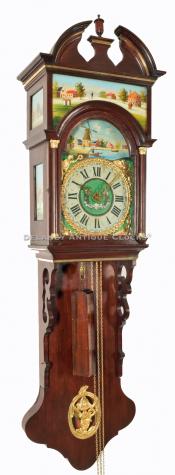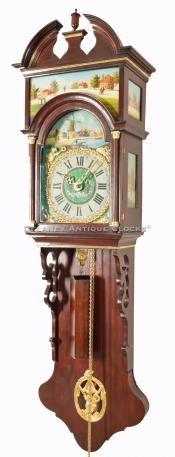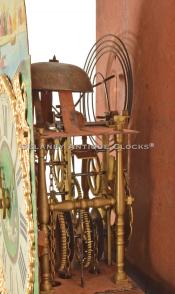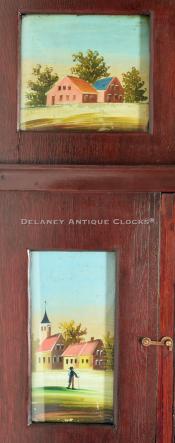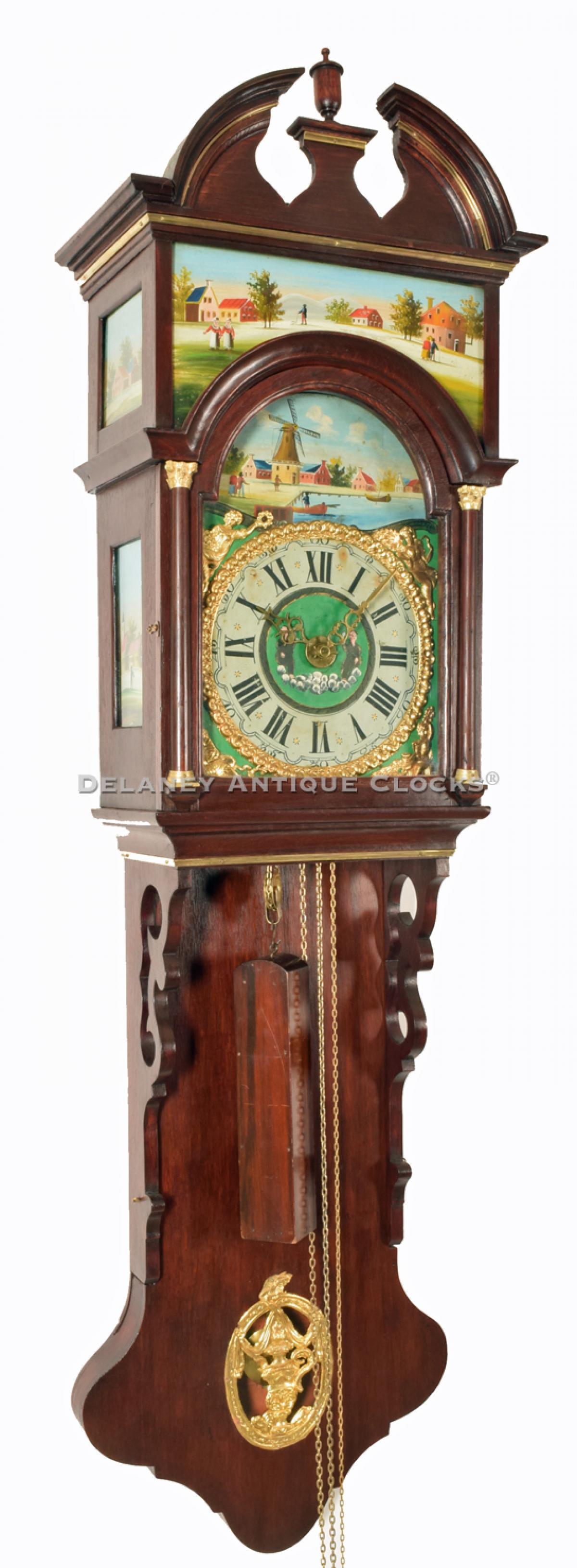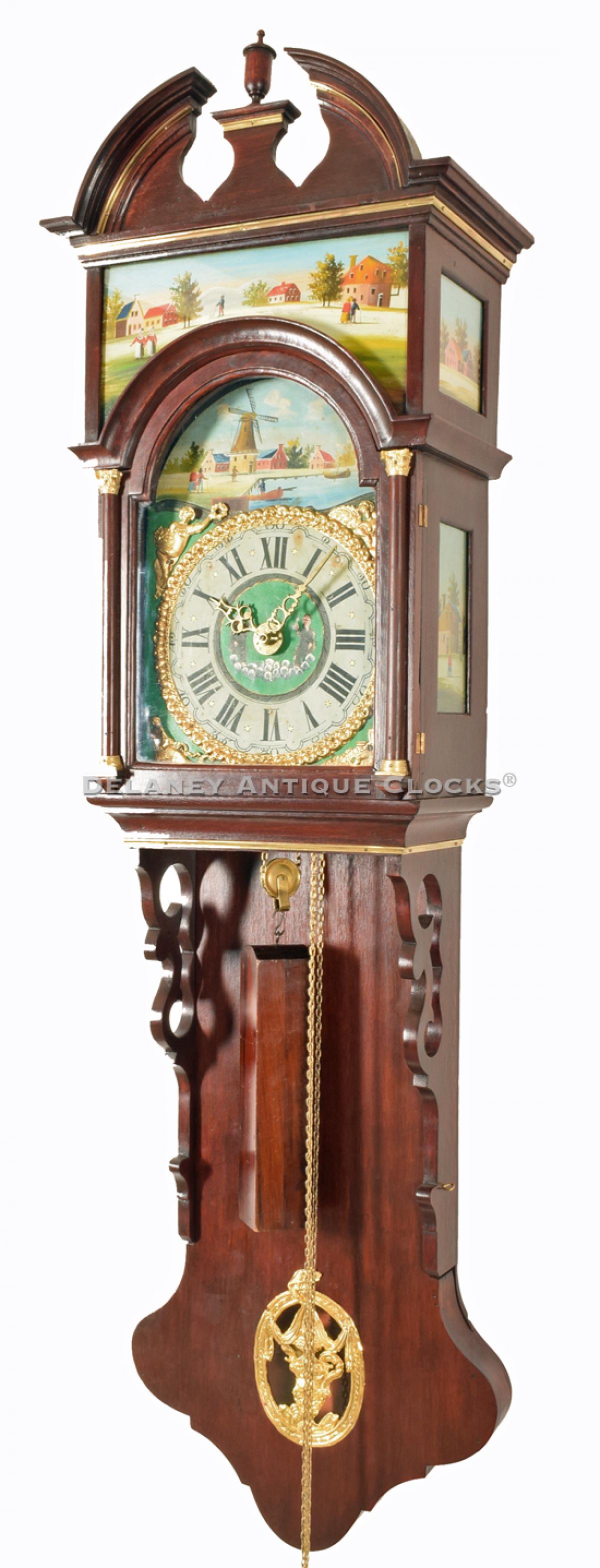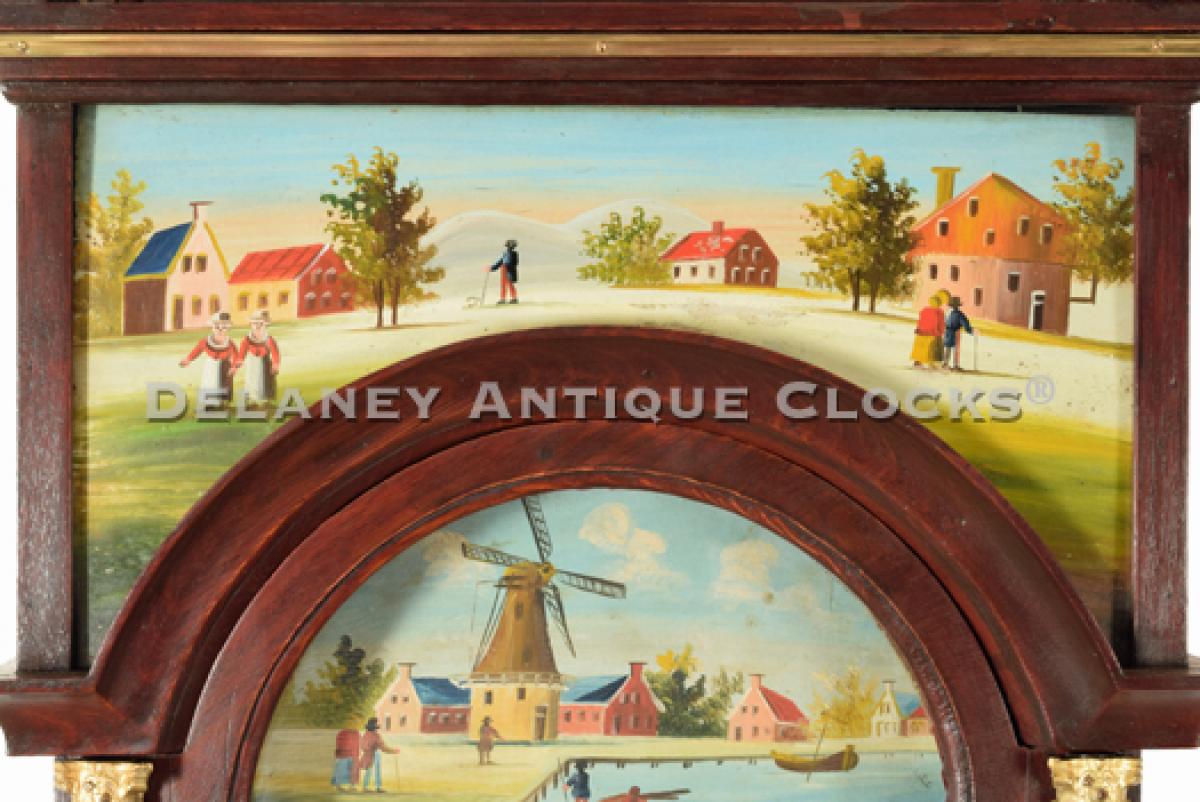A Friesland wall clock with painted panels decorating the hood. A wedding clock with an alarm. 217043A.
This clock form was made popular in Friesland in the third quarter of the 18th century. This domestic wall clock was made to replace the tall case clock form. It was a new design.
This very colorful example was made in the Netherlands sometime around 1830. This case is constructed in oak and is finished in the traditional reddish hue. The hood is designed like the hood of a tall case clock. Flanking the door's sides are engaged columns capped with Corinthian capitals. The opening is fitted with glass to protect the dial. This example is fitted with five painted panels. The panels are colorfully decorated and depict traditional scenes. The top of the hood is fitted with a crest that centers a single-turn wooden urn-shaped finial.
The colorfully painted iron dial features an arch section decorated with an iconic Dutch village scene. Here the Dutch village scene is depicted alongside the banks of a canal. Several buildings are included in this scene. They are a traditional form and are painted with colorful roofs. The most prominent building is a windmill. Standing in and around the village are a number of people. A couple of boats in the water. The popular representations of the four seasons adorn the corners of the dial. These are brass and applied to the dial. The outer perimeter of the chapter ring is fitted with an applied brass ring of garland. Dutch legend suggests that this ring indicates that this clock was originally given as a wedding gift. The time track is formatted with Roman-style hour numerals, Arabic five-minute markers, and a traditionally Dutch-designed minute track. Depicted inside the time ring are two people engaged in a toast. (To the happy couple.)
The movement is constructed in brass. It is designed to run for thirty hours on a full wind. It is weight driven and is wound by raising the exposed weight by pulling on the chain to its right. Someone in the past has made a wooden shell to cover the weight. The movement is a posted frame design and features typically shaped Friesland-style pillars and an anchor escapement. The pendulum has space to swing inside the lower section of the case. This case is designed to protect it. The brass-faced bob can be viewed through the opening. This aperture is decorated with an ornately themed brass decoration. This is a striking clock. The strike train is unusual from an American perspective. On the hour, this clock will strike the hour on a wire gong. On the first quarter hour, this clock strikes once on the same gong. On the half-hour, this clock strikes the last hour on a bell. On the three-quarter hour, it will strike one blow on the bell. This clock also features an alarm. This is independently wound. It is set from the center of the dial.
This case measures approximately 62 inches in length, 10 inches deep and 17.5 inches wide. This fine example was made circa 1830.
Inventory number 217043A.

